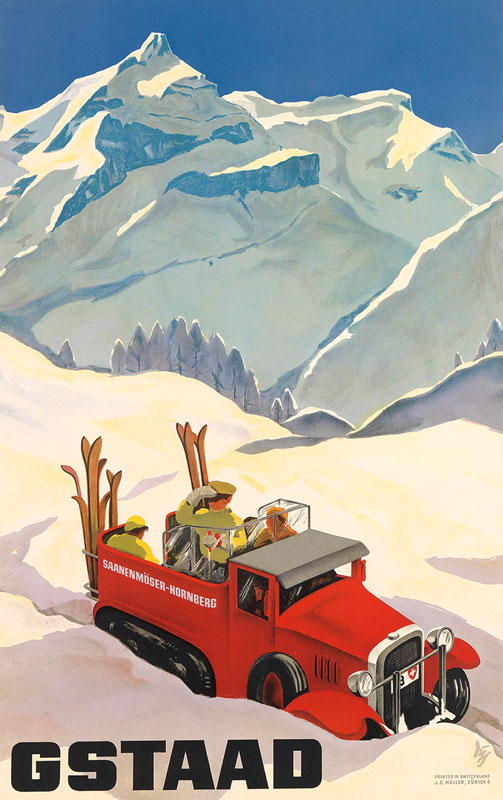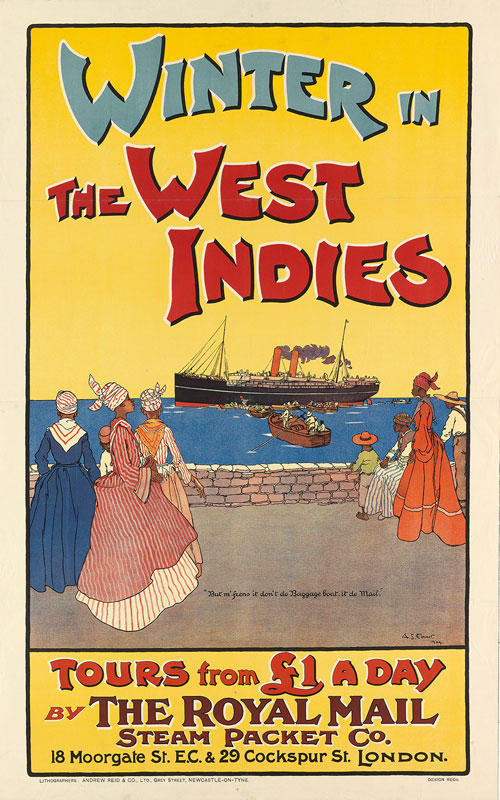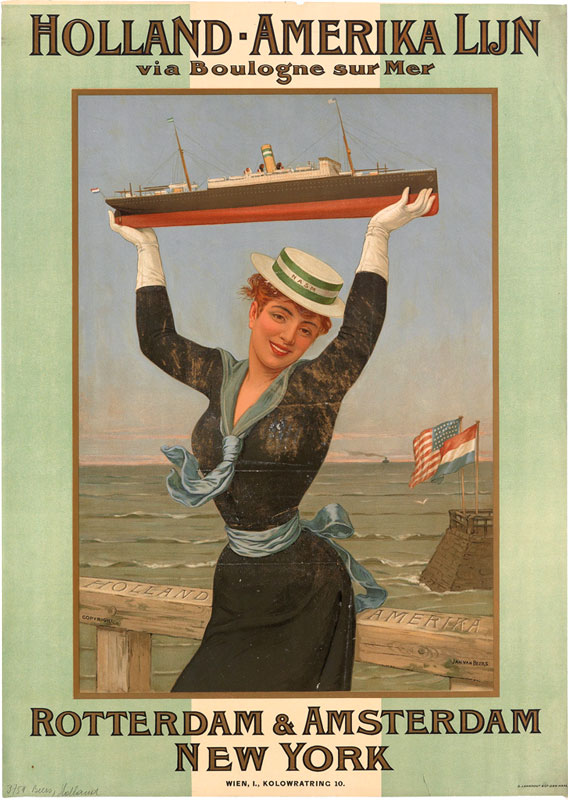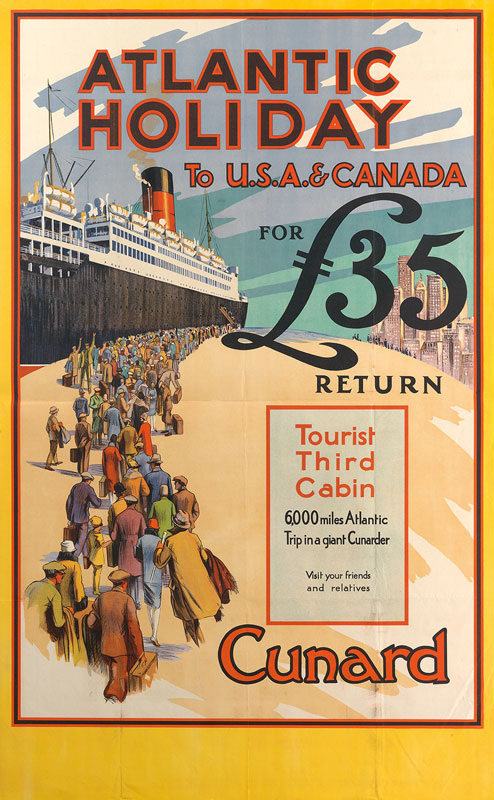Vintage Travel Posters Take Flight
What was advertising is now art By Martha Steger Martha Steger is a freelance journalist based in Midlothian, Virginia.
“A lot of modern art was created to be hated,” said Nicholas Lowry, president and principal auctioneer for Swann Galleries. “Travel posters were made to be loved—to catch your eye as you walk by.”
Three years ago, New York’s Swann Galleries achieved its all-time best sale for a travel poster when “L.M.S./Best Way,” with its stylized railroad graphic, achieved $162,500. The catalogue copy describing the 1928 poster by the Ukranian-French artist known as Cassandre reads like the description of a work of art: dimensions, condition, mounting, restoration and repairs, and the story accompanying its creation. Lowry explained, “The most famous artist of travel posters during the Art Deco period, the master of the genre, created the poster.” Only fifty copies were printed because the poster was never used by the London, Midland & Scotland Railroad for which it was created.
Last June another travel poster by Cassandre, L’Atlantique, an Art Deco portrayal of an ocean liner’s bow, brought $50,880 at Christie’s Art of Travel auction in London. Christie’s also has a dedicated poster department with travel posters featured at auctions throughout the year.
Cassandre aside, Lowry, who is also director of Swann’s poster department, said travel posters are on the ascendance. “In 1999—when we first thought to give the travel poster more display, we realized it was the awkward younger brother of posters in general. That’s no longer true.”
At a Swann Galleries auction of vintage posters held in December of 2014, a vividly colored “Winter in the West Indies” poster designed by A.S. Forrest in 1904 realized $1,063, while a Cunard advertisement for an “Atlantic Holiday to U.S.A. & Canada” by an unknown artist made $1,500. When a snowy Swiss scene by Alex Diggelmann sold for an auction record of $30,000 in March of this year, Lowry commented: “More than one participant observed that the poster market is alive and well at Swann and we humbly agree—especially in light of the numerous auction records that we set during the sale.”
These auction houses have elevated vintage travel posters, printed on cheap paper in unknown multiples, by treating them like fine art. The description of the Cassandre poster sold by Swann Galleries, for example, speaks of the “dynamic aspects of a train in motion … Vermilion aura around the two driving wheels evokes both the speed and the flames that used to roar in the bowels of the old steam engines.”
But what is now deemed art started out as advertising. “Most travel posters were originally ads for destinations, trains, ocean liners,” Lowry said. “What makes them rare and collectible is that they weren’t kept in their time. They were ripped up to make room for the next ads.”
Allan Stypeck, owner of the 40-year-old Second Story Books in Washington, D.C., said he has personally collected 20-30 travel posters costing $500-5,000 each. “Scarcity of travel posters is one of the big appeals,” he said. “I regret that I don’t have the space at the store for an entire travel poster department because the posters are an alternative to art.”
Bret Marcus, a television executive and producer in Los Angeles, has been collecting travel posters for about 30 years. His collection comprises about 50 pieces ranging from $5,000-25,000. “Part of the fun is finding them, though that is becoming increasingly hard to do,” he said. “I have one very special poster by the artist Herkimer that is supposedly one of only five copies in the world.” In addition to their ephemeral nature, Marcus pointed out another reason for their rarity. “In World War II London, you had to give up paper for the war effort. In [some] cases, posters were used as insulation in drafty London homes where fuel was scarce.”
As collectible art, vintage posters are still relatively approachable. “A lot of people like art, but they can’t afford a Giacometti,” said Lowry. “Travel posters are often of places people have visited or where they’re from—and posters in the $2,000-4,000 price range are affordable. Sub-categories of travel posters include ski posters, which have taken on a life of their own; golf posters, which can go for $10,000-20,000; and railroad posters, which are usually cheaper than vintage golf posters but have a big following.” Christie’s holds a themed “Ski Sale” vintage poster auction every January.
Swann Galleries holds five poster events annually, at least one of which is solely dedicated to travel posters, which comprise about a quarter of the 1,500-1,700 posters sold in total at all events. Of those, Lowry estimated 200 are “rare and important posters.” Movie posters are another popular category.
While auctions held in New York or London are bound to draw the heavyweight collectors, touristy locales can also beckon buyers. Julia Santen of Julia Santen Gallery in Charleston, South Carolina, estimated that as much as 80 percent of her sales are to travelers in the area, and 35-40 percent of the posters she sells are travel posters.
Both Stypeck and Santen said they buy what they like and what can display well in the showroom. “So many of the travel posters have great images that I can’t pass them up,” Santen said.












